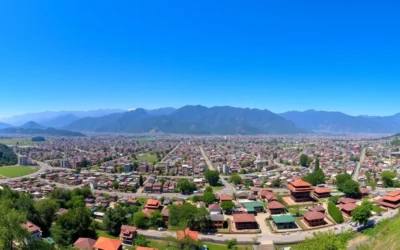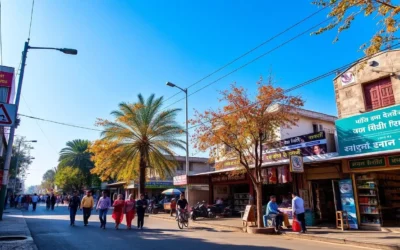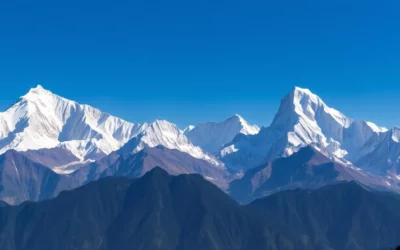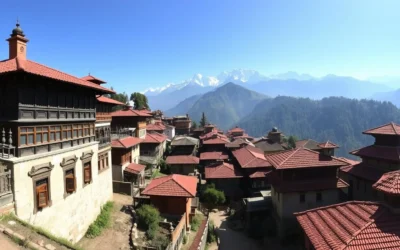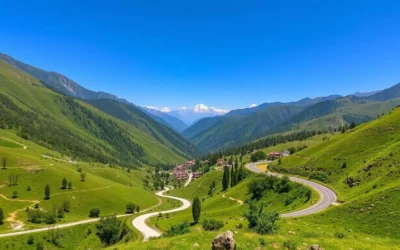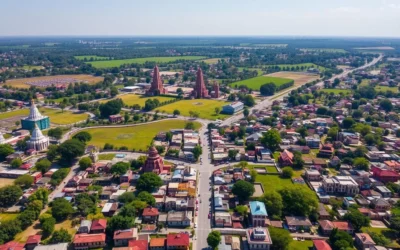Did you know that Birgunj handles an extraordinary 56% of Nepal’s total trade with India, making it the country’s most economically significant border crossing? This bustling metropolis serves as Nepal’s commercial capital and primary gateway to India, yet remains largely unexplored by international travelers. Beyond its economic importance, Birgunj offers visitors a fascinating blend of Nepali and Indian cultures, vibrant markets, delicious cuisine, and a glimpse into authentic local life that’s distinctly different from Nepal’s more touristy mountain destinations.
Overview of Birgunj
Birgunj is a major trading city in southern Nepal, positioned directly on the border with India. Often called the “Gateway to Nepal,” it connects with the Indian town of Raxaul in Bihar state, creating one of South Asia’s busiest commercial corridors. The city serves as an essential entry point for goods and travelers coming from India to other Nepali destinations like Kathmandu and Pokhara.
What makes Birgunj special is its unique cultural blend. Here, Nepali and Indian traditions merge seamlessly, creating a vibrant atmosphere unlike anywhere else in Nepal. The city pulses with energy as traders, travelers, and locals navigate its colorful markets and busy streets.
For travelers seeking authentic experiences beyond Nepal’s well-trodden tourist paths, Birgunj offers a refreshing glimpse into everyday Nepali life. The city’s strategic location also makes it an excellent starting point for exploring the southern Terai region, including nearby Parsa National Park.
Getting to Birgunj & Planning Your Journey
Reaching Birgunj is relatively straightforward, whether you’re coming from within Nepal or from India. Here are the main transportation options:
From Kathmandu
The most common route to Birgunj is from Kathmandu, approximately 135 km north. You have several options:
Ready to Plan Your Nepal Adventure?
Find the best flight deals to Nepal and start your journey to Birgunj!
From India
Birgunj is directly connected to Raxaul in India, making it a popular entry point for travelers coming from India:
Visa Information
Most visitors need a visa to enter Nepal. While visas are available on arrival at the Birgunj-Raxaul border, it’s advisable to check the latest requirements before traveling. Bring passport-sized photos and USD for payment (credit cards aren’t always accepted at land borders).
Explore Birgunj with Ease
Rent a car for maximum flexibility during your visit to Birgunj and surrounding areas.
Best Time to Visit Birgunj & Weather Tips
Birgunj experiences a subtropical climate with distinct seasons. Timing your visit right can make a significant difference in your experience.
Recommended Seasons
October to March (Best Overall)
This is the ideal time to visit Birgunj. The weather is pleasantly cool and dry, with temperatures ranging from 10°C to 25°C (50°F to 77°F). Clear skies make this period perfect for sightseeing and outdoor activities. If you visit during festival season like Dashain (October) or Tihar (November), you’ll experience the city at its most vibrant and colorful.
February to April (Spring)
Spring brings moderate temperatures between 15°C and 30°C (59°F to 86°F). This is a good time to visit before the summer heat intensifies. The weather is generally pleasant, though it can get warm during midday. Spring also features several local festivals and fewer tourists compared to the peak winter season.
Seasons to Avoid
April to June (Summer)
Summers in Birgunj are extremely hot and humid, with temperatures often exceeding 40°C (104°F). The heat can be oppressive, making outdoor exploration uncomfortable. If you must visit during this time, plan activities for early morning or evening and stay hydrated.
June to September (Monsoon)
The monsoon brings heavy rainfall to Birgunj, often causing flooding and transportation difficulties. Humidity levels are high, and the constant rain can limit sightseeing opportunities. Roads may become muddy and difficult to navigate, especially in surrounding rural areas.
Travel Tip: If you’re planning to combine your Birgunj visit with treks in Nepal’s mountain regions, October-November and March-April offer the best weather conditions for both the lowlands and highlands.
Getting Around Birgunj
Navigating Birgunj is relatively straightforward once you understand the local transportation options. The city is compact enough that many attractions are within walking distance of each other, especially in the central areas.

Local Transportation Options
Transportation Tips
Navigating Birgunj Like a Local:
- Always negotiate fares before getting into any vehicle
- Keep small denominations of Nepali rupees handy for paying drivers
- Download maps for offline use as internet connectivity can be spotty
- Consider hiring a local guide for a day if you want to explore efficiently
- Traffic can be chaotic – allow extra time for journeys, especially during rush hours
Where to Stay in Birgunj
Birgunj offers a range of accommodation options to suit different budgets and preferences. While it may not have the extensive tourist infrastructure of Kathmandu or Pokhara, you’ll find comfortable places to stay during your visit.
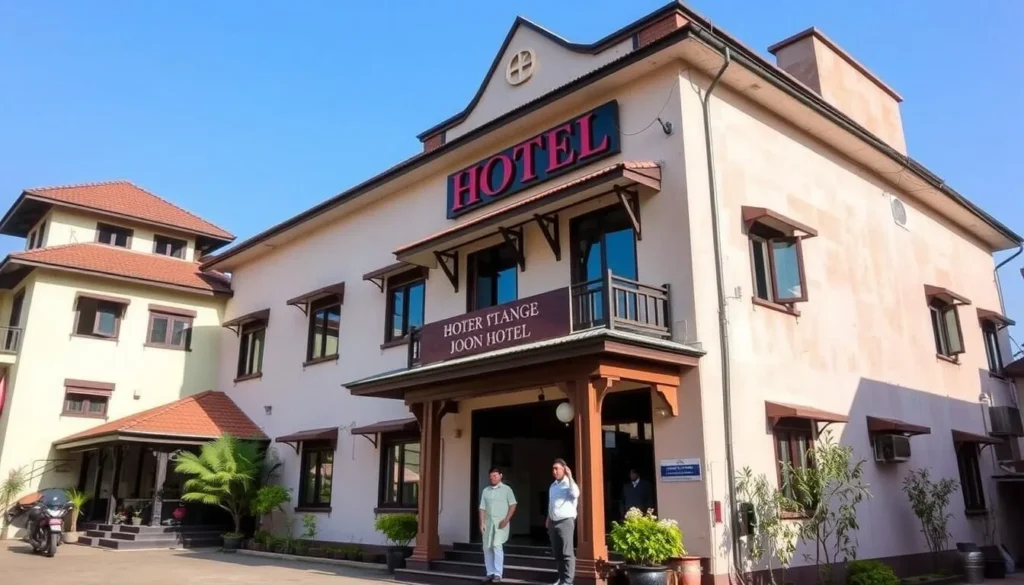
Accommodation Options
Budget Stays
For travelers on a tight budget, Birgunj offers several affordable guesthouses and lodges, particularly near the bus station and market areas. Expect basic but clean rooms with fans, shared bathrooms, and sometimes breakfast included. Prices range from NPR 800-1,500 ($6-12 USD) per night.
Popular options: Hotel Makalu, Pathibhara Guest House
Mid-Range Hotels
Mid-range accommodations offer more comfort with amenities like air conditioning, private bathrooms, TV, and often an on-site restaurant. These hotels are typically located in the central business district and provide good value for money. Expect to pay NPR 2,000-4,000 ($16-32 USD) per night.
Popular options: Hotel Makalu Birgunj, Hotel Kailash, Suraj Hotel
Upscale Options
Birgunj has a few higher-end hotels catering to business travelers and tourists seeking more comfort. These properties offer amenities like 24-hour room service, Wi-Fi, conference facilities, and sometimes a swimming pool or fitness center. Prices range from NPR 5,000-10,000 ($40-80 USD) per night.
Popular options: Hotel Vishwa, Parsa Hotel & Resort
Neighborhood Guide
City Center
Staying in Birgunj’s city center puts you within walking distance of the main attractions, restaurants, and markets. This area is ideal for first-time visitors who want to be in the heart of the action. The central area is also well-connected by local transportation.
Adarshnagar
This residential area offers a quieter atmosphere while still being close to amenities. It’s a good choice for longer stays or those who prefer to be away from the hustle and bustle of the city center. You’ll find some mid-range and upscale accommodation options here.
Find Your Perfect Stay in Birgunj
Browse a wide selection of hotels, guesthouses, and homestays to suit every budget.
Accommodation Tips:
- Book in advance during festival seasons (October-November) when accommodations fill up quickly
- Check if your hotel offers airport/bus station pickup services
- Confirm if the hotel has backup power generators, as Birgunj experiences occasional power outages
- Ask about Wi-Fi availability and reliability if staying connected is important to you
Dining & Local Cuisine in Birgunj
One of the highlights of visiting Birgunj is experiencing its diverse culinary scene. The city’s position on the Nepal-India border has created a unique food culture that blends Nepali, Indian, and local Terai flavors.

Must-Try Local Dishes
Where to Eat
Street Food
Birgunj’s streets come alive with food vendors, especially in the evening. The area around Ghantaghar (Clock Tower) and the main market is perfect for sampling local street food. Try the momos (dumplings), samosas, and chaat from vendors with the longest lines – a sign of freshness and quality.
Local Restaurants
For a sit-down meal, head to one of Birgunj’s local restaurants. Places like Annapurna Bhojanalaya and Hotel Makalu Restaurant serve authentic Nepali cuisine at reasonable prices. Most local restaurants offer vegetarian and non-vegetarian options.
Sweet Shops
Birgunj is famous for its sweet shops (mithai pasal). Don’t miss trying fresh milk sweets like barfi, rasgulla, and gulab jamun. Pawan Sweets and Sharma Sweets are local favorites known for their quality and variety.
Dining Tips:
- Most restaurants in Birgunj serve lunch from 12 PM to 3 PM and dinner from 7 PM to 10 PM
- Carry small bills for street food purchases
- Look for busy establishments – they usually have the freshest food
- If you’re concerned about food safety, stick to cooked foods and avoid raw vegetables or tap water
- Vegetarians will find plenty of options throughout Birgunj
Top Attractions & Sightseeing in Birgunj
While Birgunj may not be as well-known for tourism as other Nepali cities, it offers several interesting attractions that provide insight into local culture, history, and daily life. Here are the must-visit places in and around Birgunj:
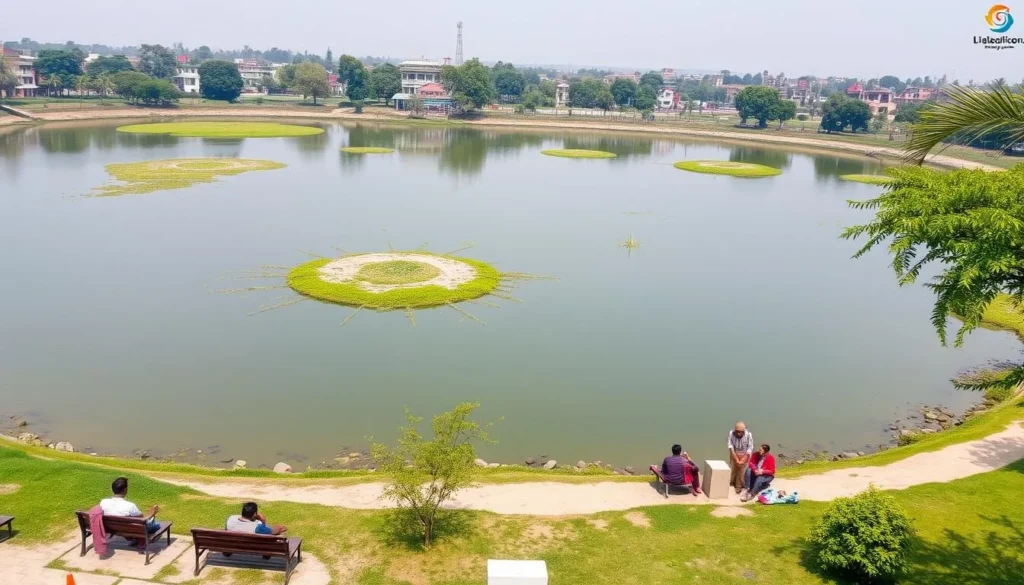
Within Birgunj City

Religious Sites
Explore Birgunj’s Cultural Heritage
Discover the best guided tours and cultural experiences in and around Birgunj.
Markets & Shopping
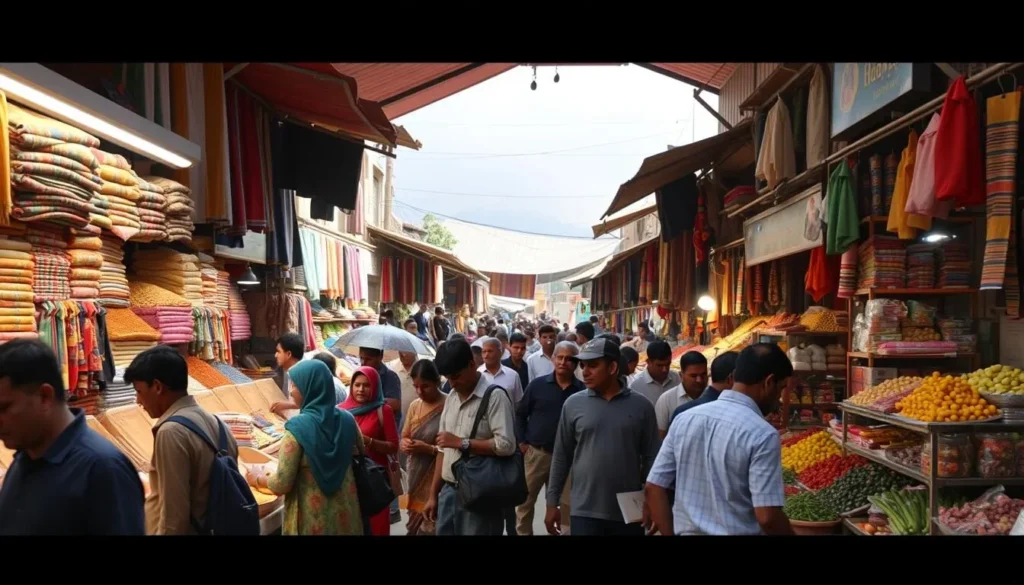
Shopping Tips:
- Bargaining is expected in most markets – start by offering about 60% of the initial asking price
- Morning is the best time for fresh produce shopping
- Keep your valuables secure in crowded market areas
- Look for local handicrafts and textiles as souvenirs
Natural Attractions & Outdoor Experiences
While Birgunj itself is an urban center, the surrounding region offers several opportunities to connect with nature and enjoy outdoor activities.

Parsa National Park
Located just 35 km east of Birgunj, Parsa National Park is the closest wilderness area to the city and makes for an excellent day trip or overnight excursion. Covering 627 sq km (242 sq miles), this protected area is home to diverse wildlife and beautiful landscapes.
Other Outdoor Activities
Cycling Tours
Rent a bicycle in Birgunj and explore the surrounding countryside. The relatively flat terrain makes for easy riding, and you’ll get to see rural villages and agricultural landscapes. Early morning rides offer cooler temperatures and beautiful light for photography.
Narayani River
The Narayani River flows about 30 km from Birgunj and offers opportunities for boating and riverside relaxation. Local operators provide boat rides, and the riverbanks are pleasant spots for picnics. The river is particularly beautiful at sunset.
Adventure Awaits in Nepal
Book wildlife safaris, guided hikes, and outdoor adventures near Birgunj.
Cultural Experiences & Festivals
Birgunj’s rich cultural tapestry is best experienced through its festivals, traditions, and community gatherings. The city’s location at the crossroads of Nepal and India has created a unique blend of cultural practices.

Major Festivals
Cultural Experiences
Local Performances
During festivals and special occasions, you might encounter traditional music and dance performances in public spaces. These include Mithila folk dances, devotional bhajans, and modern interpretations of traditional art forms. Ask at your accommodation about any scheduled cultural programs during your stay.
Religious Ceremonies
Visiting temples during morning or evening aarti (prayer ceremonies) offers insight into local religious practices. The rituals, sounds, and scents create an immersive cultural experience. Remember to be respectful and follow local customs when visiting religious sites.
Cultural Tips:
- Remove shoes before entering temples and religious sites
- Ask permission before photographing people, especially during religious ceremonies
- Dress modestly when visiting temples (covered shoulders and knees)
- If invited to a local home, bringing a small gift is appreciated
- During festivals like Holi, wear clothes you don’t mind getting stained
Day Trips from Birgunj
Birgunj’s strategic location makes it an excellent base for exploring other interesting destinations in southern Nepal. Here are some worthwhile day trips to consider:

Popular Day Trip Destinations
Janakpur (3-4 hours)
Known as the birthplace of Sita (from the Hindu epic Ramayana), Janakpur is an important religious and cultural center. The magnificent white Janaki Temple is the main attraction, along with numerous ponds and smaller temples. The city is also known for its vibrant Mithila art tradition.
Getting there: Regular buses connect Birgunj to Janakpur, or you can hire a private vehicle for more flexibility.
Chitwan National Park (4-5 hours)
While a bit far for a day trip, it’s possible to visit the edge of this famous national park in a long day from Birgunj. Known for its population of Bengal tigers, one-horned rhinoceros, and diverse birdlife, Chitwan offers a more developed wildlife experience than Parsa National Park.
Getting there: Private vehicle is the best option for a day trip. Consider staying overnight if time permits.
Simara and Surrounding Villages (1 hour)
Explore the rural countryside around Birgunj by visiting Simara and nearby villages. This gives you a glimpse into traditional Terai life, with opportunities to see farming practices, village architecture, and interact with locals away from the city.
Getting there: Local buses, shared jeeps, or hired vehicles can take you to these areas.
Explore Beyond Birgunj
Discover guided day trips and excursions from Birgunj to nearby attractions.
Safety, Etiquette & Local Customs
Understanding local customs and following safety guidelines will help ensure a smooth and enjoyable visit to Birgunj. Here’s what you need to know:

Safety Considerations
Cultural Etiquette
Religious Sites
Remove shoes before entering temples and religious buildings. Dress modestly with shoulders and knees covered. Some Hindu temples may restrict entry to non-Hindus – always ask before entering if unsure. Photography may be prohibited inside certain temples, so look for signs or ask permission.
Social Interactions
Greet people with a “Namaste” (palms together in front of chest) rather than handshakes. Public displays of affection are frowned upon. When eating, the right hand is used (the left is considered unclean). It’s polite to accept tea or food when offered in someone’s home.
Important Safety Note: Birgunj occasionally experiences political demonstrations or strikes (bandhs) that can disrupt transportation and business operations. Check local news and consult with your accommodation about any planned events during your stay.
Practical Travel Tips for Birgunj
These practical tips will help you navigate Birgunj more smoothly and make the most of your visit:
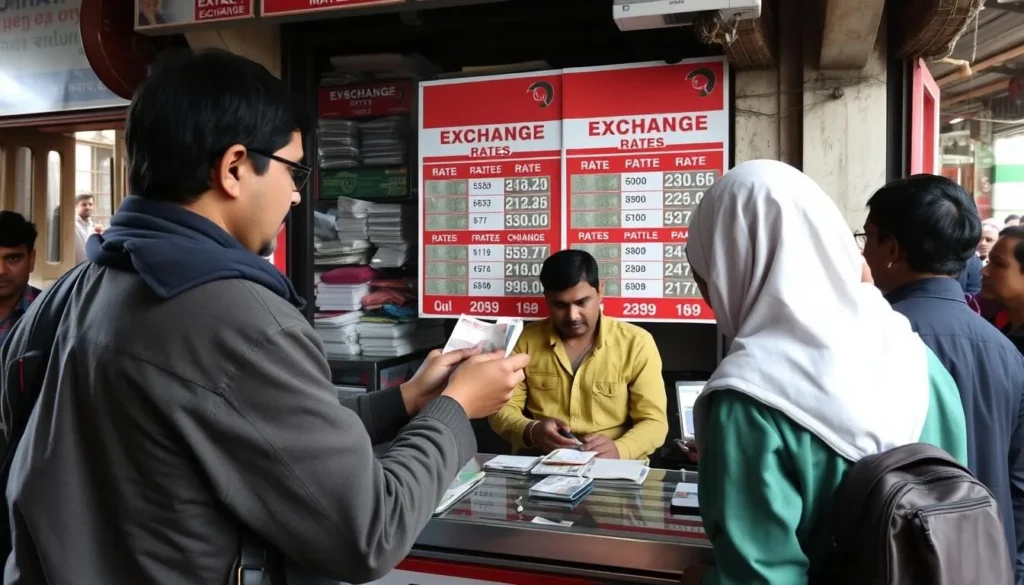
Essential Information
Planning Your Visit
Suggested Itinerary
Birgunj can be explored in 1-2 days. Consider this basic itinerary:
Day 1: Morning visit to Ghadiarwa Pokhari and nearby temples, afternoon exploring markets, evening relaxation at a local restaurant.
Day 2: Day trip to Parsa National Park or nearby villages to experience rural life.
What to Pack
In addition to your regular travel items, consider bringing:
- Lightweight, modest clothing (covering shoulders and knees)
- Comfortable walking shoes
- Sunscreen and insect repellent
- Hand sanitizer and wet wipes
- Reusable water bottle with filter
- Basic medications
Local Contact Information:
- Tourist Police: 100
- Emergency Services: 102
- Birgunj Municipality Office: +977-51-522561
- Narayani Sub-Regional Hospital: +977-51-522142
Frequently Asked Questions about Birgunj
Is Birgunj worth visiting for tourists?
Yes, Birgunj offers an authentic glimpse into Nepali life away from the typical tourist trail. While it may not have the dramatic mountain scenery of northern Nepal, it provides valuable cultural experiences, insights into Nepal’s economy, and access to less-visited natural areas like Parsa National Park. It’s particularly interesting for those interested in cross-border culture, commerce, and the lifestyle of Nepal’s Terai region.
How many days should I spend in Birgunj?
Most visitors find that 1-2 days is sufficient to explore Birgunj itself. If you plan to use it as a base for day trips to places like Parsa National Park or nearby villages, consider staying 3-4 days. Birgunj is also commonly used as a transit point when crossing between Nepal and India, with travelers spending just one night.
Is it easy to cross the border between Birgunj and Raxaul?
Yes, the Birgunj-Raxaul border crossing is one of the busiest and most developed border points between Nepal and India. The process is relatively straightforward for foreign tourists with valid visas. The border is open from 6 AM to 10 PM daily. Be prepared for queues during peak hours and have your documentation ready. Note that transportation options change at the border – you’ll need to exit one vehicle, cross on foot, and find new transportation on the other side.
What unique souvenirs can I buy in Birgunj?
Birgunj offers several unique shopping opportunities. Consider purchasing:
- Mithila art – traditional paintings from the region
- Handwoven textiles and fabrics
- Local spices and tea
- Brass and copper items
- Traditional Nepali sweets (though these have a short shelf life)
The markets near the border often have goods from both Nepal and India, offering unique cross-border shopping opportunities.
Is Birgunj a good starting point for trekking in Nepal?
Birgunj is not an ideal starting point for trekking in the Himalayan regions of Nepal. It’s located in the southern plains (Terai), far from the mountain trekking routes. If your main purpose in Nepal is trekking, it’s better to head directly to Kathmandu or Pokhara, which have better connections to trekking regions. However, Birgunj does offer access to nature walks and wildlife experiences in the nearby Parsa National Park.
Conclusion
Birgunj may not be on every traveler’s Nepal itinerary, but this vibrant border city offers a fascinating glimpse into an authentic side of Nepal that many tourists never experience. From its bustling markets and diverse culinary scene to its important cultural sites and nearby natural attractions, Birgunj rewards visitors who venture beyond the well-trodden tourist path.
As Nepal’s commercial gateway and a melting pot of cultures, Birgunj provides unique insights into the country’s economy, daily life, and cross-border relations with India. Whether you’re passing through on your way to other destinations or deliberately seeking out less-visited places, Birgunj’s warm hospitality and cultural richness will leave a lasting impression.
So pack your sense of adventure and curiosity, and discover the hidden gem that is Birgunj – a city where traditional Nepal meets modern commerce, creating an experience unlike any other in this beautiful Himalayan nation.
Ready to Explore Birgunj?
Start planning your journey to this fascinating Nepali city today!
The above is subject to change.
Check back often to TRAVEL.COM for the latest travel tips and deals.

